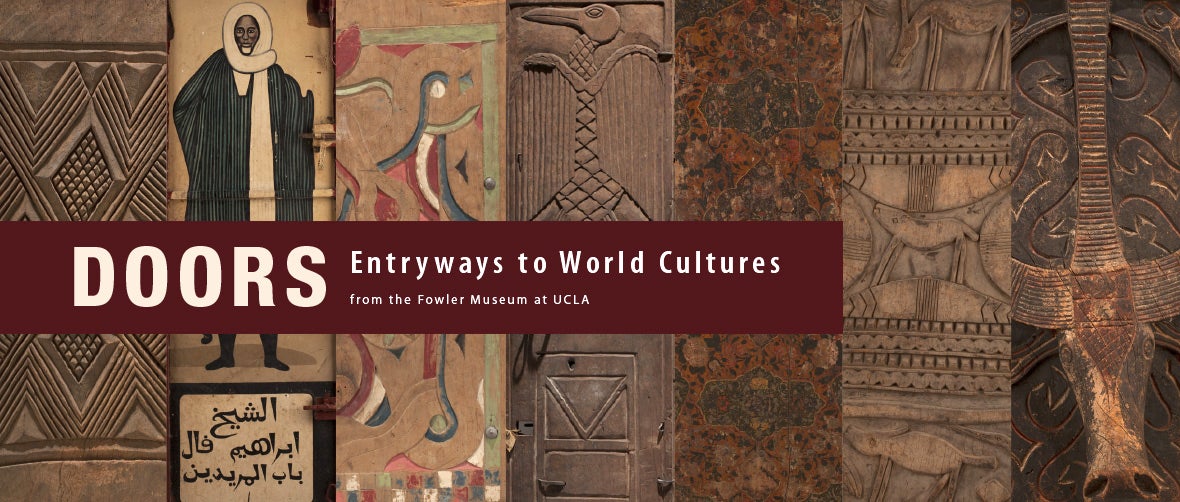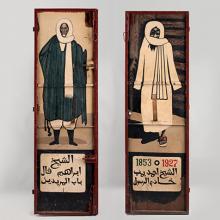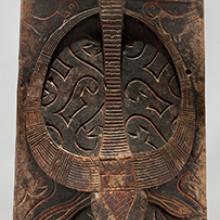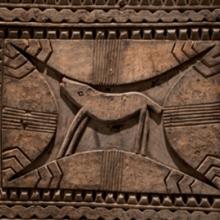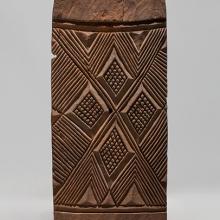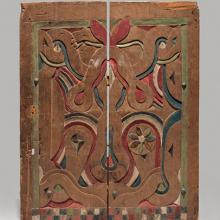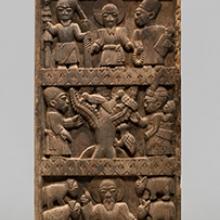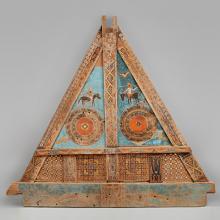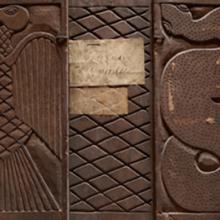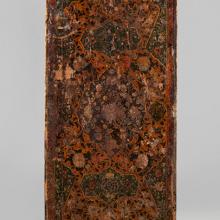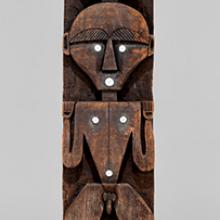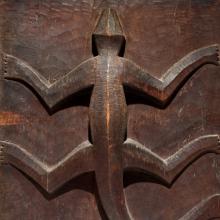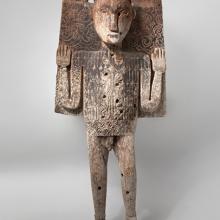Doors: Entryways to World Cultures
Doors: Entryways to World Cultures
from the Fowler Museum at UCLA
As a necessary architectural element throughout the world, doors separate and define space, facilitating passage between interior and exterior, private and public, sacred and secular. Rather than simply serving utilitarian purposes, the carved, embossed, and painted portals on display from Africa, Asia, and South America illustrate an extraordinary array of forms and motifs. Most examples are made of wood and are embellished with imagery such as animals, both mythical and real, human figures, or abstract designs. From the Yoruba of Nigeria to the Toraja of Indonesia, a number of cultures have transformed doors, elevating them from ubiquitous forms to individual works of art.
The doors on display demonstrate not only incredible craftsmanship and aesthetics, but in their original settings, reveal information about their owners. Occasionally, the imagery depicted on carved and painted doors served as historical narratives that relayed significant events or stories. Elaborate door panels were often created for sacred places such as the palaces of kings and chiefs, meeting houses of secret societies, and burial chambers. Many of these doors identified their proprietors as wealthy or referred to prestigious ancestors, or were the property of high-ranking members of associations. Such doors may have not only demonstrated the importance of the people who lived inside, but the significance of the items that were stored inside.
Portals served to protect and include iconography capable of offering spiritual as well as physical security. Their symbols were often propitious, alluding to cosmology, ancestors, and deities, as well as to abundance, health and well-being, continuity, and beneficence. The buffalo, an auspicious symbol in Toraja culture, appears prominent on two separate doors on display. On one example, a staff featured between the animal’s horns symbolizes defense or protection.
Dating from the nineteenth to early twentieth centuries, this exhibition presents house, ceremonial, tomb, granary, and palace doors from countries such as Nigeria, Mali, Senegal, Iran, Indonesia, Taiwan, and Suriname. Each example depicts the extraordinary artistry and the diverse range of meanings and uses that people from around the world have applied to doors.
This exhibition was made possible through a generous loan from the Fowler Museum at UCLA.
©2014 by the San Francisco Airport Commission. All rights reserved.
